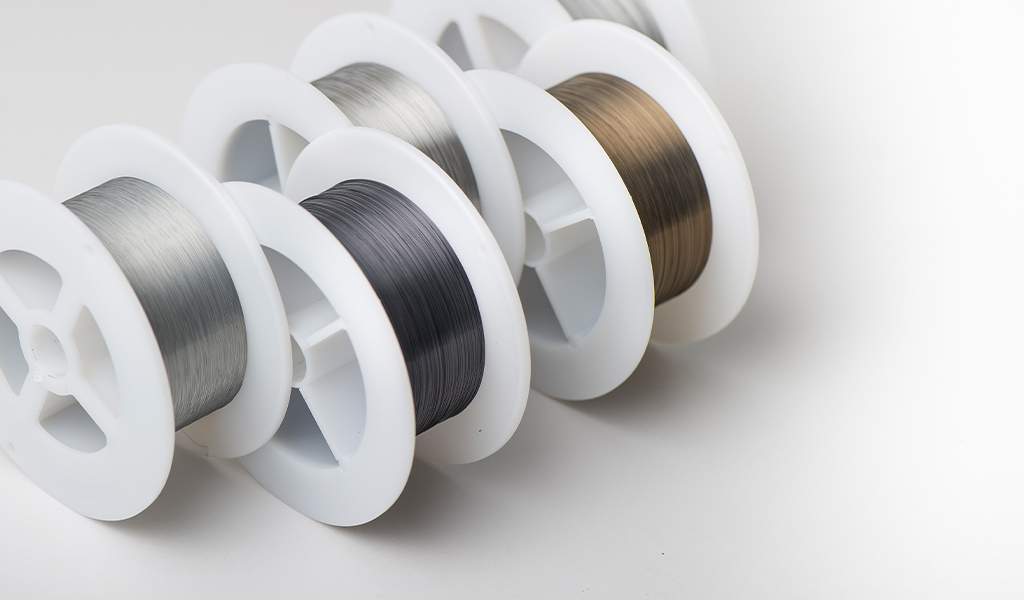Superelastic conductor materials: Enhancing implantable lead durability

Fort Wayne Metals is dedicated to pushing the boundaries of materials science, delivering precision-engineered solutions for the world’s most demanding applications. With expertise in advanced wire manufacturing, the company supports industries where performance, reliability, and innovation are paramount.
In this technical blog, Dr. Jeremy Schaffer, along with other Fort Wayne Metals contributors, provide insights into the materials, processes, and engineering advancements that drive better outcomes. This post serves as a high-level summary of our technical white paper, distilling key findings and practical applications.
Implantable biostimulation leads are essential components in cardiostimulation and neurostimulation devices. These highly engineered wire constructs must endure millions of flexural cycles over decades of use. Fort Wayne Metals has introduced a new wire construct concept that significantly improves fatigue resistance, potentially enhancing the longevity and reliability of implantable medical devices.
Breakthrough in conductor materials
Traditional biostimulation leads have relied on materials like 35N LT® (CoNiCrMo), which offer good fatigue resistance but still present limitations in extreme flexural conditions. The introduction of Nitinol-based conductors presents a major advancement. When substituted for 35N LT®, Nitinol demonstrates a 50% to 100% improvement in cyclic strain-loading fatigue performance, making it a promising alternative for long-term implantable applications.
The new composite wire, NiTi-DFT®-30Ag, features a high-conductivity pure silver core encased in a Nitinol outer sheath. While its ultimate strength of 1000 MPa is lower than the 1600 MPa of traditional 35N LT®-DFT®-28Ag, it requires significantly more energy to fracture—65.9 mJ/mm³ compared to 23.7 mJ/mm³. This enhanced toughness suggests improved resilience under continuous flexing conditions.
Advantages for medical device applications
Nitinol’s unique superelastic properties allow it to elastically recover from strains exceeding 10%, making it an excellent candidate for applications requiring high fatigue resistance. This property has already led to its widespread use in guidewires and stents, and its introduction into implantable leads could revolutionize the field.
A key challenge in integrating Nitinol into lead designs has been its elasticity, which complicates coil formation and shape retention. However, Fort Wayne Metals has successfully demonstrated that polyimide coatings can provide the necessary electrical insulation while withstanding high-temperature shape-setting processes. This breakthrough enables the use of Nitinol-based bifilar coils, which maintain electrical isolation even after exposure to 450-550°C secondary shape-setting.
Potential future applications
The ability to shape set Nitinol-based conductors at high temperatures opens up new design possibilities for implantable leads. For example, future pacing and defibrillation systems may incorporate hybrid designs with transmyocardial leads that require exceptional flexibility and durability. Additionally, Nitinol-based leads could be programmed with deployable shapes that enhance passive fixation, reducing the risk of dislodgement or migration.
Beyond cardiac applications, neurostimulation devices could benefit from Nitinol’s compliance and resistance to mechanical fatigue. As neurostimulation leads are often subjected to constant movement within the body, improved fatigue resistance could lead to longer-lasting and more reliable therapies for conditions such as Parkinson’s disease and chronic pain.
Conclusion
The introduction of Nitinol-based conductors represents a significant advancement in implantable lead technology. With superior fatigue resistance, enhanced durability, and the ability to maintain electrical integrity under extreme conditions, these materials have the potential to redefine the future of biostimulation devices. As research and development continue, Nitinol-based leads may soon become the new standard for next-generation implantable medical devices.
For a comprehensive look at our findings, check out the white paper.
Want to discuss how our materials may support your next innovation? Connect with our team!
Categories: Materials Science, Medical Device Innovation, Wire Technology, Implantable Devices, Fatigue Resistance, R&D Insights, Biostimulation Leads

